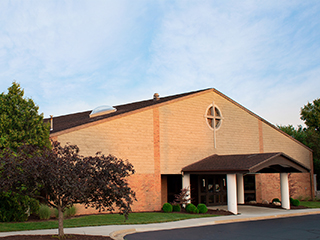
The Law
The Law
Genesis, Exodus, Leviticus, Numbers, Deuteronomy
How does this type of literature fit into the Bible as a whole?
The entirety of the Bible is built upon and looks back to the first five books of the Bible; Genesis, Exodus, Leviticus, Numbers, and Deuteronomy, collectively known as “the Law.” These scriptures attest to the goodness of creation, the sorrow and pervasiveness of sin, and God’s redeeming purposes through Abraham and his descendants in the nation of Israel. We quickly learn that the beloved people made in God’s image have rebelled, and the consequences of sin is death and fractured relationships with God and each other. Fortunately, God acted to establish a people guided by His words, laws, and presence, who would eventually produce the savior of the World, Jesus Christ (Genesis 3:15).
The Law is crucial to understanding not just many core biblical doctrines and themes, but more broadly a Judeo-Christian worldview to answer many of life’s greatest questions, like:
- Where did I come from? (God created humanity – Genesis 1:1)
- Why am I here? (to have a relationship with God – Genesis 15:5)
- Where am I going? (we have a destination after death – Genesis 25:8)
- How am I supposed to live? (according to God’s ways – Exodus 20)
How do we read the Law normally?
Though originally given to wandering Hebrews who had just been led out of Egypt, the Law lays the foundation for everyone to understand that there is but one God, a creator who possesses perfect moral character and is involved in human life. While sincere believers may debate the age of the earth and exactly how the earliest parts of the Genesis story actually unfolded, the first five books of the Bible provides a universal account of humanity, a national story for Israel, and expectations for how we are ought to live in light of our accountability to God. Reading the Law normally involves seeing its connection to history, characters and themes presented later in the Bible, and by noting the seeds of most major doctrines (e.g. the imputation of sin, atonement, depravity, wrath, grace, sovereignty, and responsibility) that will blossom throughout the rest of scripture.
How does this part of the Bible point to Jesus?
The Gospel of Matthew immediately points out that Jesus was a descendant of Abraham and the Jewish lineage that came from him (Matthew 1:1). As the fulfillment of the promise God made to Abraham, Jesus brought salvation from the Jews to the rest of the world. This salvation is a better deliverance than the Exodus, where Jesus saves His people from sin and death into a life meaning, purpose, and relationship with God. Jesus’ holy life and substitutionary death completely fulfilled the demands of the Levitical sacrifice system. When people acknowledge their unholiness and place their trust in Jesus, believers graciously receive Christ’s holiness and can therefore truly rest in a better promised land of right standing before God.
How does the Law fit into our lives today?
Our posture toward laws (especially those we think are stupid) is largely negative. This is even more pronounced in our posture toward the Law (both the 613 laws God gave Israel and many of the narratives contained in the first five books of the Bible). We find much on these pages to be archaic, distasteful, or (at best) irrelevant. The Apostle Paul takes a different approach, calling the Law “good if one uses it properly” (1 Timothy 1:9). How do we do that? By looking at how Jesus used the Law: “And beginning with Moses [The Law] and all the Prophets, he interpreted to them in all the Scriptures the things concerning himself” (Luke 24:27).
The Law shows us how far we, and Israel before us, have fallen from God’s perfect standard. Thankfully, it also shows us that where we fail, Jesus succeeds. By faith in Him, we can find ourselves transformed more and more into His loving image, which ends up fulfilling the Law. “For the whole law is fulfilled in one word: ‘You shall love your neighbor as yourself’” (Galatians 5:14).

























